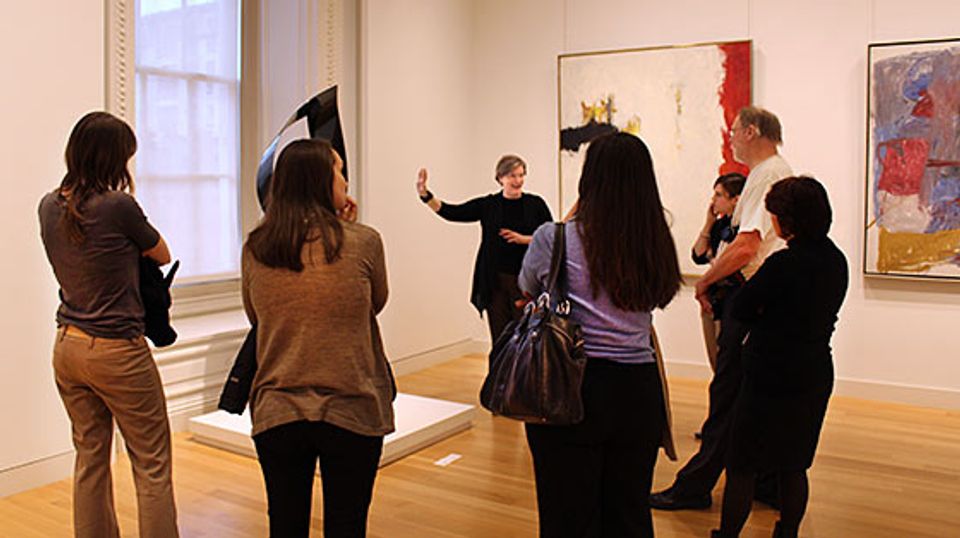
Laurel Fehrenbach is a Public Programs Coordinator at the American Art Museum, and runs the "Is This Art?" gallery talks with her colleague, Carol Wilson, Assistant Chair of Education for In-Gallery Programs. The next "Is This Art?" program is this Saturday, July 27th at noon. Meet in the Lincoln Gallery, 3rd floor.
"They call this art?"
"My kid could do that!"
"My kid could do that!"
"My kid could do that!"
"I don't get it..."
Do these phrases sound familiar? If you're walking through a modern or contemporary art gallery they might! What is it about modern art that's so confusing? What does it mean? How are you supposed to "get it" if you aren't really even sure what "it" is?
You're not alone. Many of our visitors at the American Art Museum are often baffled by our 3rd-floor galleries full of large canvases, flashing video screens, sculptures that are abstract and sculptures that are eerily realistic. So how do you even get started? Think about it this way: when you walk into a party where you don't know anyone, what do you do? You start talking to people! Walking into a museum gallery is similar. You have to start a conversation around a work of art in order to get to know it.
This is exactly what we're encouraging visitors to do during the "Is This Art?" gallery talks, which are conducted a few times a month in our Lincoln Gallery. During these hour-long sessions, a group of visitors and a facilitator dive into just one artwork in our collection. First, we start with a few minutes of silent observation, to look slowly and take in the whole piece. Then we begin asking questions, sharing thoughts, things we noticed, ideas, associations, memories or possible meanings. The conversation takes off from there and is incredibly rich and fulfilling.
During "Guided Looking" sessions, the facilitator will also offer information about the artist, or a curatorial perspective on the piece (to enhance the conversation, not to suggest that there is a "right" or "wrong" answer). During “Open Discussion†sessions, the facilitator functions as part of the group and doesn’t provide any additional information. Instead, he or she uses only the content of the dialogue to build an interpretation, as well as share a variety of tools and techniques that empower individuals to recreate these experiences on their own, with any work of art they choose.
Just as there is an "art of conversation," there is a conversation about art. It's a vehicle for communication between the artist and viewer, the viewer and the artwork, as well as among a group of visitors. So just like meeting a new person for the first time, remember to start with an introduction, ask lots of questions, and have an open mind. We promise, the next time you come back to see the piece, it will feel like visiting an old friend.


















